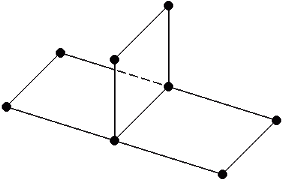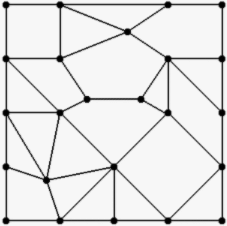I. Introduction
- Definitions
- 1D, 2D, 3D spaces
- Curve, Surface Mesh, Spatial Decomposition
- Vertices, Edges, Faces, Cells
- Well-Formed Surfaces
- Components Intersect "Properly"
- Faces are: disjoint, share single Vertex, or share 2 Vertices and the Edge joining them
- Every edge is incident to exactly 2 vertices
- Every edge is incident to exactly 2 faces
- Local Topology is "Proper"
- Neighborhood of a Vertex is homeomorphic to a disk (permits stretching and bending, but not tearing)
- Called a 2-manifold
- Boundaries: half-disk, "manifold with boundaries"
- Link of Vertex is a simple closed path
- Global Topology is "Proper"
- Connected
- Closed
- Bounded
Bad!
Fixed
Bad! - Subdividing a Domain
- Structured Subdivision
- Unstructured Subdivision
Structured
Unstructured - Data
- Geometric Information
- Vertex Locations
- Others?
- Attribute Information
- Color (at vertex or face)
- Temperature/Pressure (at vertex, face, or cell)
- Vegetation, Population, other statistics
- Others?
- Applications
- Polygon Mesh for Efficient Object Representation
- Scientific Computation (fluid dynamics)
- Subdivision Surfaces
- Partitioning: Voronoi Diagram / Delaunay Triangulation




